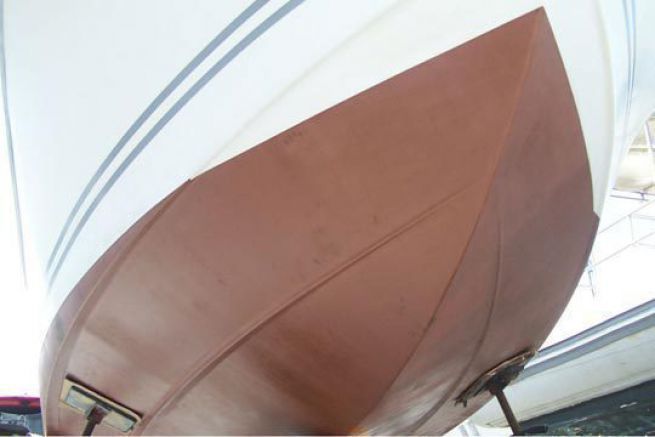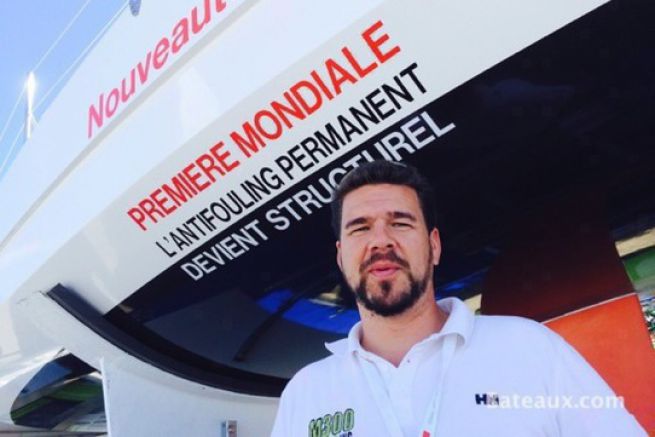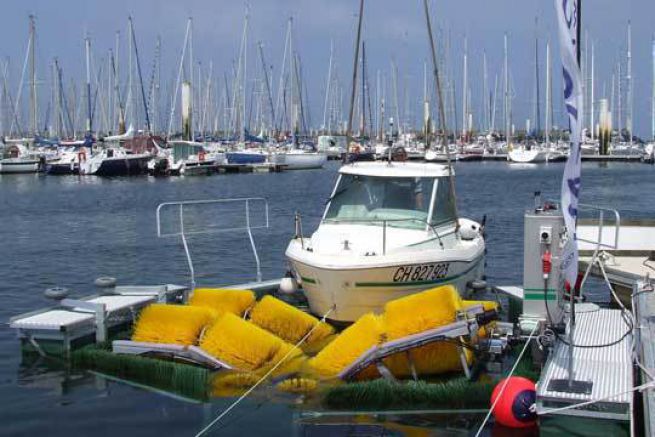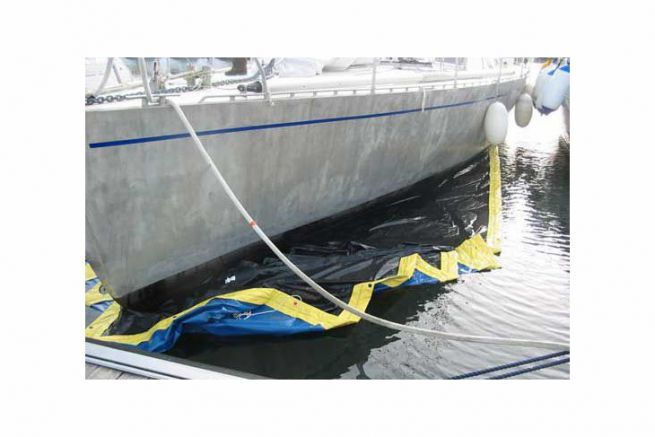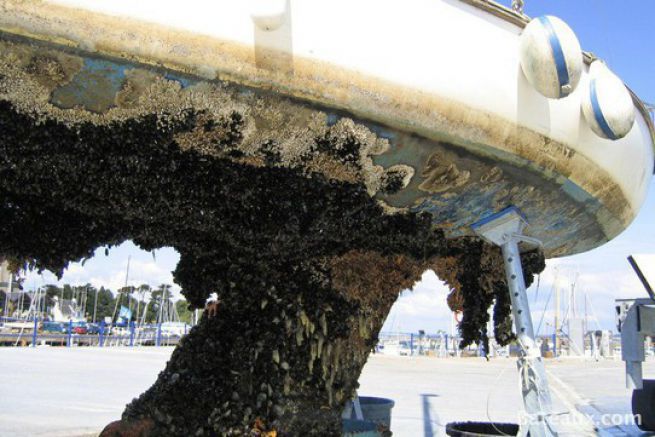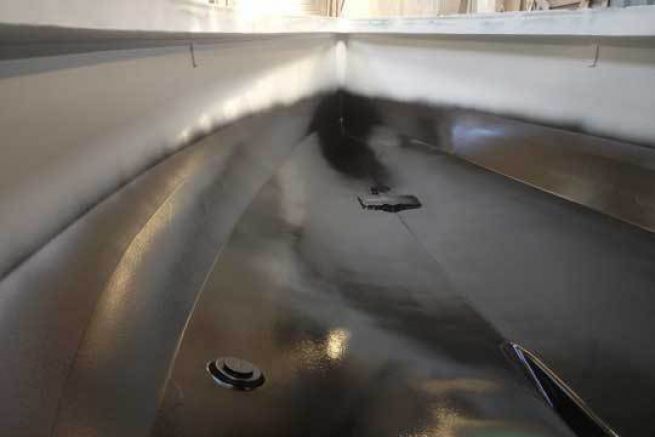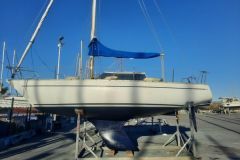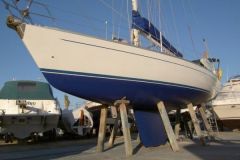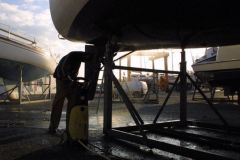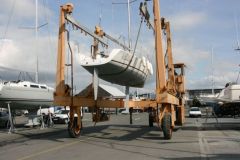What if the antifouling of the future consisted precisely in not putting antifouling! At least that is what the creators of Bio-Ocean have been advocating for many years. Rather than trying to prevent microorganisms from colonizing the hull by using biocides, why not clean the hull regularly?

Launched in 2007, Bio-Océan first imagined a high pressure underwater washing solution. A robot equipped with a huge nozzle that walks under the hull to clean it. The solution works. It was tested in Granville, but remains too complex and above all too expensive.
But our inventors have revised their copy and switched to a cleaning system, still afloat, but this time with the help of brushes. A bit like a car wash, rotating brushes rub the bottom of the hull. The prototype has just completed a test phase in Cherbourg and users are fully satisfied with it.

When the need arises, with a dirty hull, all you have to do is present your boat in front of the engine. Contrary to the model for cars that move around the vehicle, here the machine moves the boat forward and backward. Slightly leaning on the brushes, the hull comes out of the operation clean after about fifteen minutes (for a 6 m boat). A textile skirt recovers the waste which, it should be noted, is not polluting. Indeed, the hull is free of antifouling and only organic waste is detached.
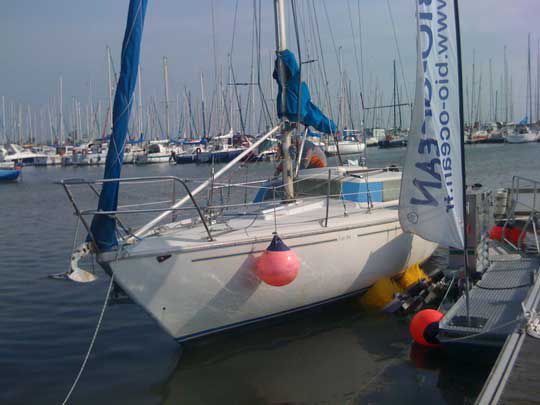
This machine is available with horizontal brushes for motor boats, but also exists with vertical brushes for the keels of sailing boats. If the length of the boat is not important since it moves on the machine, its width and draught (for sailing boats) are limiting. The "small" machine offers to treat boats with a waterline width of 3.00 m (be careful not to over-draw!) and a maximum draught of 1.80 m. Another model for 4 m wide boats with a possible draught of 2.50 m is also under study.
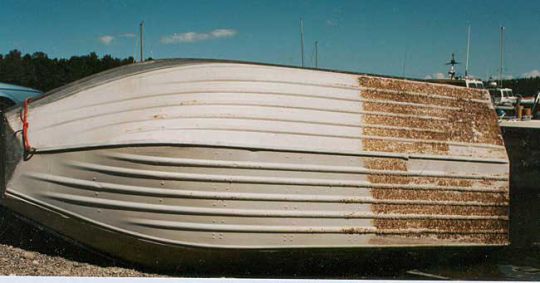
Example of effectiveness on a half-treated hull.
If the technique works, the price for the yachtsman has yet to be defined. "An annual subscription with no limit on the number of passages seems a good principle," says Laurent Helou, in charge of product development. "And as the annual outing to change the anodes and inspect the hull remains obligatory, the cost of this subscription should correspond to the price of fitting an antifouling, including paint. Thus the annual outlay will remain the same for the yachtsman. But this pricing policy will have to be decided according to the different actors who use the machine: port, professionals..."
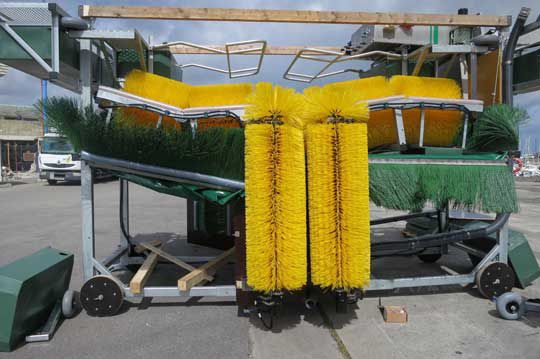
But where do we find these machines? Today, the experiment in the port of Cherbourg is over and next season this machine should be installed in La Rochelle or Morgat (two ports that are interested in the principle). Other ports such as Arcachon or Toulon are in the middle of the reflection phase. But the difficulty remains to convince the yachtsmen of the good done for the environment not to use antifouling, to change their habits and to adopt this type of cleaning. Another long learning process..


